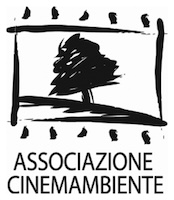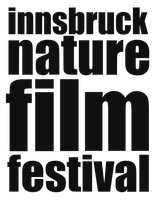Elephant Boy
Directed by
«Elephant Boy begins in the most wonderful way. Toomai mounts the biggest elephant in Mysore and his youth, captivating innocence and personality give the Indian people a dignity never seen before on the screen. But soon the spectacle of the studio scenes and the West End accents continually move the film onto another plane… for example, it is claimed that an elephant goes mad at the death of its owner, even that it mysteriously goes insane before the death of its owner. No way! The story gets heavier. And an actor with a false beard beats the elephant to explain the lunacy in a more Western manner. The jungle with its thousand eyes could have been the metaphor of all those young and eager Odysseuses: nothing, not even that. The film continues artificially, relying on the circus thrills that an elephant hunt can provide». (John Grierson)
In 1936 London Film, through Alexander Korda, sent Flaherty to India to shoot a film based on the Rudyard Kipling story Toomai of the Elephants. As usual, Flaherty concentrated more on the things he saw during that trip, the environment around him, the lifestyles of the people of Mysore, than on an actual reconstruction of the story. Of course, the story was only a pretense for the director's latest ethnological study. The resulting plot had been cut to the bone once again: on a hunting expedition a boy who dreams of becoming a hunter flees homeward with his elephant, fearing that the hunters want to harm the beast. In the end his dream comes true. This was enough for Flaherty, who was certainly more enchanted by the India around him than Kipling's story. But producer Alexander Korda did not agree – even in the wake of the success of Man of Aran, he had Flaherty accompanied by a crew of professionals. Later, scenes directed by Zoltan Korda, the producer's brother, were added. As John Grierson said, Zoltan Korda's presence in Elephant Boy is an attack on Flaherty's style. Even Tabu had come off as a series of detached episodes – a hodgepodge of documentary and narrative styles. There, Flaherty and Murnau's differences in interpreting cinema lessened when the American director abandoned the set, while in Elephant Boy the divergencies between the two directors – whose conceptions of cinema were diametrically opposed to one another – were forced to converge only out of pure commercial interest. Elephant Boy remains a non-success, a flop compared to other films made by Flaherty. Despite this, five years later in The Land, Flaherty once again shows his ability to provide us with a highly personalized view of art and nature. The scenes filmed inside Alexander Korda's London studios were the work of Zoltan, who was very concerned about the film's acceptance in star system circles and the emotional stir that the film's young protagonist would cause among audiences.
In-depth analysis
About the Movie Elephant Boy
«The name of Robert Flaherty is not current among 21st century cinephiles – some indeed seem never to have heard of him. This oblivion is very different from his reputation at the time of his death, just fifty years ago. John Grierson, his most devoted and influential disciple, could unhesitatingly name him as “one of the great five innovators in the history of film” (the others were Méliès, Griffith, Sennett and Eisenstein). Herman Weinberg called him “that poet, that Melville of the cinema”. John Huston, who adored him, wrote at Flaherty's death, “He went all the way and saw everything”. The reaction, though, had set in even in his life-time. He was charged (not altogether unjustly) with a Rousseauesque or Wordsworthian romanticism, with using documentary material to recreate lost idylls of primitive existence. As ethnographic cinema progressed (largely under Flaherty's own influence) from the old travelogue days to new scientific disciplines, he was increasingly indicted for his manipulation of reality. People were shocked that the unforgettable sequence of building the Igloo in Nanook was only achieved by re-staging the construction over and over. Graham Greene, an early detractor, sneered that “Man of Aran did not even attempt to truthfully describe a way of life. The inhabitants had to be taught shark-hunting in order to supply Mr Flaherty with a dramatic sequence”. Perhaps it is an inevitable factor of art history that deification is followed by eclipse, whether temporary or permanent. Flaherty's career was as troubled and damaged as those of Stroheim, Eisenstein or Welles. In twenty-six years, he completed only four feature films according to his own conception: Nanook, Moana, Man of Aran and Louisiana Story. Of the rest, White Shadows of the South Seas was taken over by Hollywood and Woody Van Dyke, Tabu was bent to F.W. Murnau's melodramatic tastes; Elephant Boy was dragged back from India and reshaped in the papier-mâché forests and encampments of Denham studios. (“No extra elephants and rubber models”, wrote the sceptical Greene, “could retrieve what Flaherty had lost in India – a story line”). To be fair to his producers, Flaherty was not a conventional or easy director to deal with. The celebrated, endlessly patient observation to discover the secrets of his subjects was a mark of genius, certainly, but it cost money. Once he was bewitched by a location, he would stay on and on, until the months stretched into years. If Alexander Korda's patience ran out on Elephant Boy, it was only a matter of luck that for Man of Aran Flaherty had an infinitely more tolerant producer in Michael Balcon, who fretted and suffered, fending off the share-holders, as Flaherty stayed serenely on and on in the isles, sending back little but the bills that eventually tripled the budget.
For Grierson and the documentary schools of Britain and America, he was the innovator supreme. It was for Flaherty that Grierson had coined the word “documentary”; and Flaherty was for practical purposes the inspiration of the British documentary movement, whose influence was ultimately worldwide, and was to define the evolution of the best television documentary on both sides of the Atlantic. The impact of Nanook of the North, in Grierson's words, “was to introduce method and consideration into the fleeting camera glimpses of the early travelogue and give aesthetic pattern and significance to the record”. Flaherty brought interpretation and subjective response to the objective record of actuality. The demands of this new interventive approach stimulated technical innovation. His fascination with the things he saw incited him to a new freedom of camera movement (see how his camera anticipates the craftsmen's hands in Industrial Britain). Collaborating with Bell and Howell, he experimented with light-weight cameras and (in Man of Aran) with the new automatic camera. To explore ever more intimately his subjects' faces he pioneered the use of panchromatic film in Moana. All the documentarists of his day, watched and followed, right to the end. But with the passage of history, innovation in itself inevitably loses its power to impress, as the innovations become absorbed into regular practice. Looking again at Flaherty, fifty years after his death, we are not so touched by his technical discoveries as by more profound qualities in his films. Like his contemporaries we can still be astonished by the acuteness of his vision. Perhaps he was, as Graham Greene accused, often distracted by pictorialism and image: “How affected and wearisome were those figures against the skyline, how meaningless that magnificent photography of storm after storm”. Perhaps. But today what captures and concentrates our attention is not the great landscapes, but Flaherty's minute observation of the hand or the face of an anonymous potter or fisherman, intent upon his unspectacular daily task. Inspiring the image, and perhaps his most significant and enduring quality, is Flaherty's majestic humanism – though humanism itself is a quality that is no longer revered as it was thirty or more years ago. In private life, it seems, Flaherty was a sweet, expansive, ever generous, hospitable man. On location he and his wife and lifelong collaborator Frances would rent a large property where they would keep an open house for everyone around the film and for any passing traveller. Somewhere John Huston recorded how shamed he felt when one night in New York he and Flaherty were accosted by a desperate, drunken vagrant. Huston (as any of us would) simply wanted to escape; but Bob put the man in a taxi, took him home and fed and succoured him. Human generosity infuses and impels all Flaherty's films. Nanook and Moana and Tabu derive their persistent vitality – the quality that makes them, once we have seen them, part of our own lives, like familiar friends – from the intensity of Flaherty's own feeling for them. The fascination, instilling each one of his films, with the human battle for survival with a natural environment that is unpredictable in its rewards and punishments is so intense because of his feeling, his involvement with his characters. He honours, respects and loves each one; never patronises them or sees them simply as objects. It is no accident that the best-loved and the most memorable of the people whom he has made part of our lives are the small boys, the enchanting Sabu of Elephant Boy, sparkling young Joseph Boudreaux in Louisiana Story, the taciturn lad in Man of Aran. Flaherty entered their world and shared with them the discovery of a universe. John Grierson in his later years was capable of writing self-serving nonsense; but to the end he always wrote well about Flaherty, and left us one of the finest summations of the unique qualities that still touch us today in this unjustly forgotten master: “Flaherty returned us to the origins of all observation; where the seasons are; where flowers not only grow but are worn in the hair; where people take, or fight for, the fruits of the earth, and dine well and pour a ceremonial libation to the Gods and dance in thanksgiving: where the difference between a man and an animal of the wild is only one of degree, where storms come and go and are merely a great spectacle in the passing and children are forever the assurance that time is timeless and the horizon finally without too much pain”».
(David Robinson)







